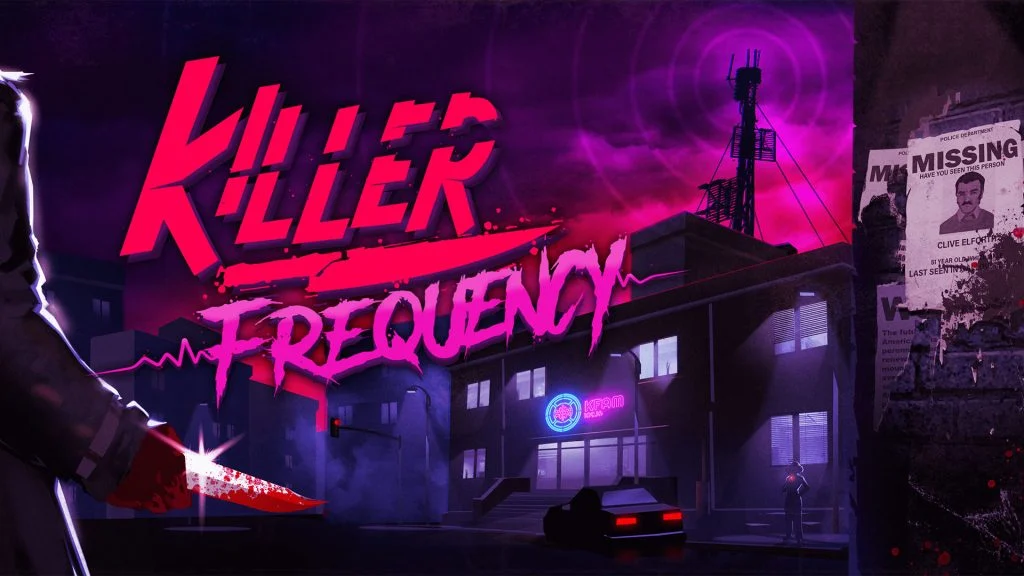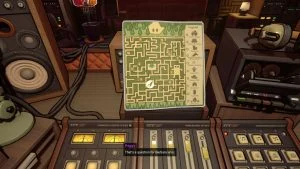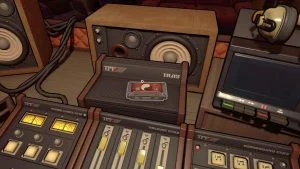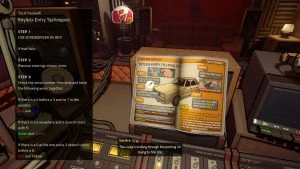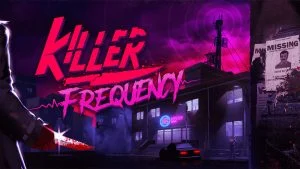Killer Frequency is a first-person horror survival game developed and published by Team17. In the game, you play as a big-wig DJ stuck in a small town that must solve a murder mystery while spinning beats in an 80s cell-shaded aesthetic.
When I first saw the first few minutes of gameplay footage for Killer Frequency, my interest was immediately piqued. A murder mystery narrative game where you also get to spin records? It sounded like a blast. While I can’t sit here and say it’s the best indie I’ve played in 2023, I can say it’s a pretty innovative and entertaining ride, minus a few bumps along the way.
Great Artwork, Cool Vibes, Outstanding Voice Acting
In Killer Frequency, you play former big-wig DJ extraordinaire Forrest Nash, who just recently moved to the small town of Gallows Creek. Nash’s voice actor, Josh Cowdery (Dead Island 2, LEGO Star Wars: The Skywalker Saga), does an excellent job of embodying the fish-out-of-water storyline presented in the game.
Without spoiling the story too much, this is a big fish in a small pond sort of scenario, where the only available police force and 911 operators are out of commission, forcing Nash to take over as the resident peacekeeper and problem solver to the small town’s citizens.
This somewhat convoluted and strange premise drives the rest of the narrative, as Nash and his assistant, Peggy, must help callers through increasingly dangerous scenarios to avoid the resident serial killer, the Whistling Man.
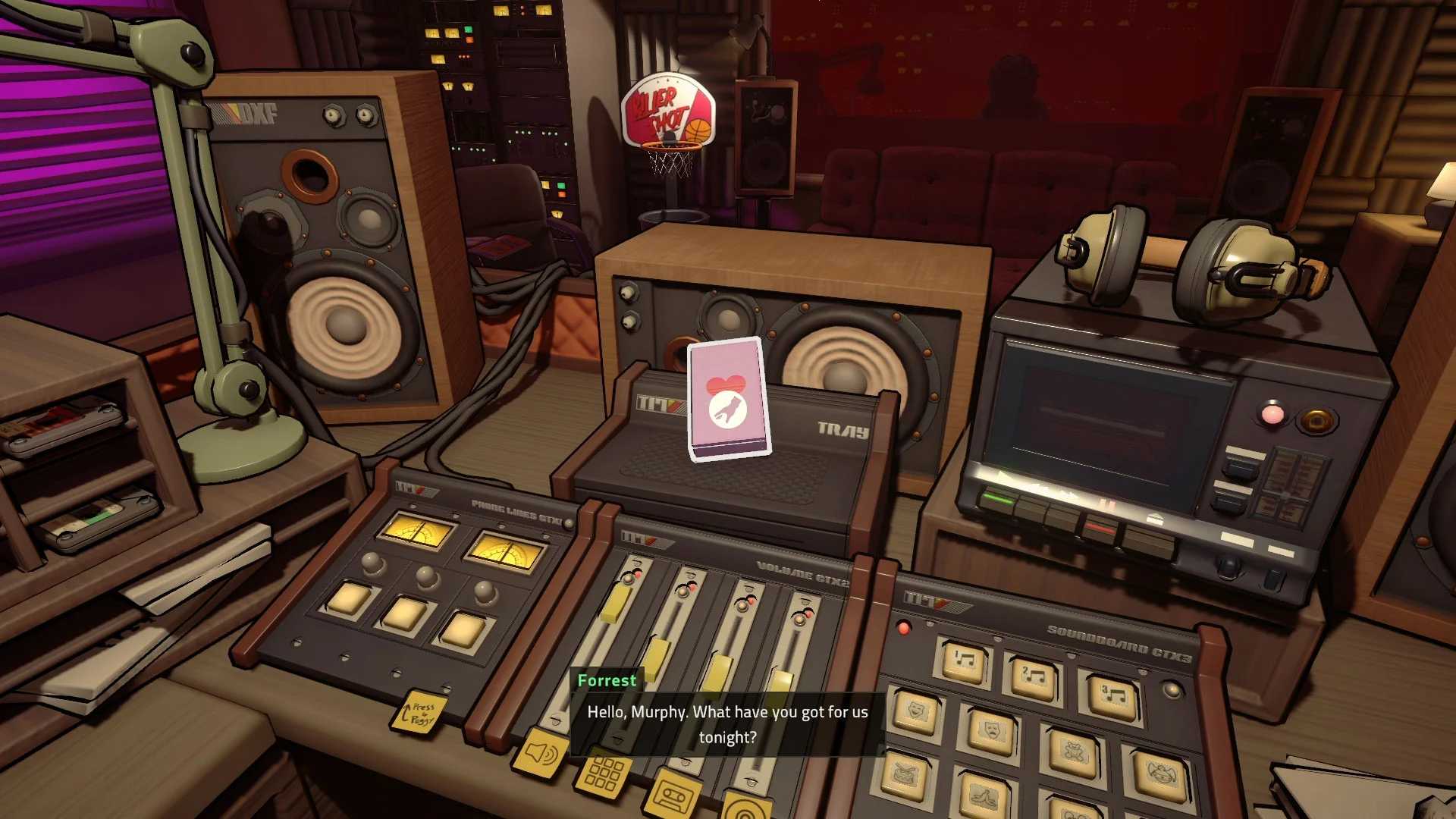
Peggy Weaver, voiced by Naomi Mcdonald (Elden Ring, The Witcher 3), does a great job as your DJ assistant and right-hand gal who walks you through the game’s mechanics and narrative as you unravel the mystery of the Whistling Man. The relationship that forms between DJ and the assistant comes off as pretty natural, and it feels like the two actors riffed off each other’s performances.
The game’s humor, aesthetic, and gameplay loop are a fun & unique take on the puzzle genre.
This is accompanied by a pretty banging 80s soundtrack, with records strewn across the studio for you to find and unlock. Though it feels like a somewhat limited library of tracks, there’s enough variety to keep the DJ part of the game interesting. I’d be lying if I wasn’t trying to get that perfect transition, even though literally no one would care other than me. It certainly serves the setting and transports you back a few decades. And this is all wrapped up in a pretty cool cell-shaded look that definitely lends itself to the spirit of the game.
The Narrative Can Feel Plodding
No, it’s not because Ponty’s Pizza calls for the fifth time in a row to prank you. One of the biggest downsides of Killer Frequency also lies in one of the game’s core concepts. As a disc jockey, it’s your job to stand in a stationary place and spin records all night. And while there are portions of the game that send you exploring, these don’t really make up for the fact you’ll be spending 75% of your time at your DJ booth and another 25% spent in a dank basement.
This can sometimes cause the pacing to feel a bit stunted, and while the dialogue writers and voice actors did an amazing job, it’s still hard to stay entertained, especially in a world of constant digital stimuli.
Since everything is presented via voice and text, some of the faceless characters you’ll save along the way lose that feeling of connection since you never actually meet or see them in person. If you get easily absorbed into mystery narratives, this might not be a problem for you. But if you’re the type to be texting, watching a YouTube video, and playing a game at the same time — the title may struggle to hold your attention through its 6-7 hour playtime.
There are Great, New Ideas in the Title
There are parts of the game that I wish came much, much sooner. At one point, players can use an old-school detective board to collect clues. However, it comes near the game’s final act, and it feels like a missed opportunity to use the mechanic earlier in the game. Sure, I get it — they need to ease you into the role, but really, I wouldn’t have minded if they made up some weird excuse for it to be there earlier in the game.
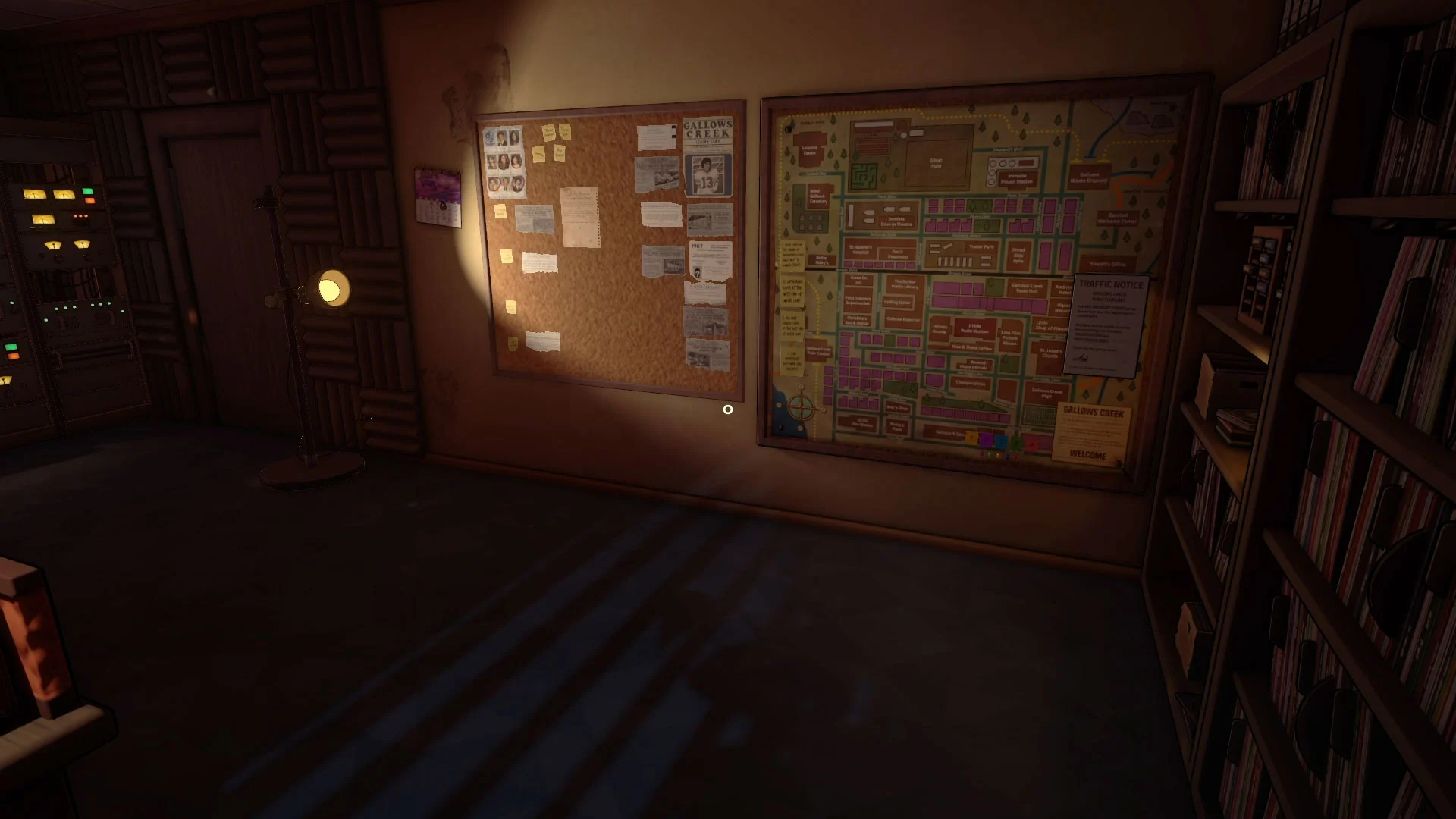
There are also a few sections of the game that feel pretty confounding or random — like a section where you need to use a map but don’t actually have any written clues, so you need to pay close attention to the narrative. This would be great, except it’s the only section like this, so it threw me for a loop, and I just randomly selected options to get past it.
That being said, the missions that are more straightforward are intuitive, especially if you’re fully absorbing what’s happening on the call.
The stressful feeling of walking a caller through a perilous scenario raises the tempo, and the feeling of letting someone succumb to their demise is soul-crushing.
But, that’s really what makes the game great in a lot of ways. There are high stakes here, and the wrong decisions can get your caller killed.
Lastly, this might just be me, but the save feature isn’t great. You’d hope that the Autosave would back up your progress from the beginning of each call so that if you fail, you can go back and retry. However, it doesn’t really work like this, and whenever I failed a mission, I didn’t really have much of choice but to just take the L and move on to the next call — considering that the autosave function saves every 10 seconds or so.
Killer Frequency is a Fun Indie Gem
If you only enjoy action games, then Killer Frequency is not for you. However, if you’re into gameplay narrative, love the 80s, and can find the fun in text-based titles and puzzles, Killer Frequency is one to pick up. While some mechanics could have probably been fleshed out more from a game theory perspective, the title stands as an innovative take on the murder mystery genre, especially if you’ve always wanted to moonlight as a DJ.
Killer Frequency Review
Groovy
Killer Frequency is a fun, albeit sometimes slow, horror game set in with original music, amazing voice acting, and a great story. If you’re a fan of narrative murder mysteries with an 80s twist, this is one indie worth investigating further.
Killer Frequency is available on Steam.
See our Review Policy Here.
PC Review Copy provided.

